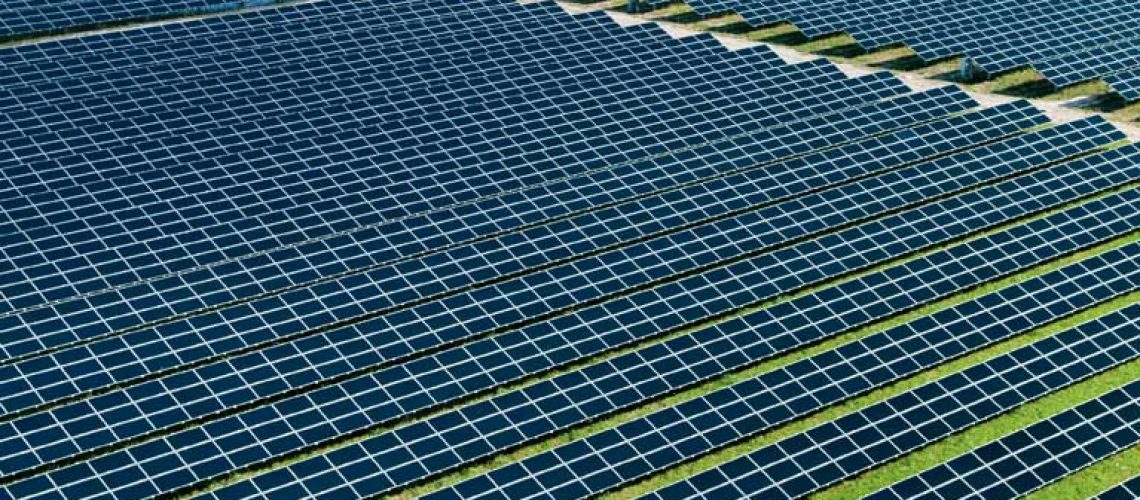New 3.5 GWDC manufacturing facility planned in the U.S. Southeast; Ohio plant expands and gets a $185 million upgrade.
First Solar, Inc. announced plans to invest up to $1.2 billion in scaling production of American-made solar modules, an investment that is forecast to expand the company’s ability to produce modules for the U.S. solar market to over 10 GWDC by 2025.
As part of its push to scale U.S. production of solar modules, the company intends to build its fourth, fully vertically integrated domestic factory, with an annual capacity of 3.5 GWDC, in the U.S. Southeast. The company said it expects to invest up to $1 billion in the new factory, which, contingent upon permitting and pending approval of various federal, state, regional, and local incentives, is expected to begin operations in 2025.
In 2021 First Solar announced that it was building its Ohio facility, where the company produces its thin film solar modules using a fully integrated process using cadmium telluride (CdTe) semiconductor. The company said that the Ohio plant is currently the largest vertically integrated complex of its kind in the Western Hemisphere. First Solar intends to $185 million to upgrade and expand its Ohio footprint by 0.9 GWDC.
The company said it will invest in expanding the capacity of its two operating facilities in Perrysburg and Lake Township, Ohio, by 0.6 GWDC to 3.6 GWDC of annual Series 6 module capacity. And it will also expand its third Ohio factory, expected to be commissioned in the first half of 2023, to 3.5 GWDC of annual Series 7 module capacity. The expansion will increase First Solar’s total investment in its Ohio manufacturing facilities to over $3 billion, with a cumulative annual production capacity of over 7 GWDC by 2025.
“In passing the Inflation Reduction Act of 2022, Congress and the Biden-Harris Administration has entrusted our industry with the responsibility of enabling America’s clean energy future and we must meet the moment in a manner that is both timely and sustainable,” said Mark Widmar, chief executive officer, First Solar. “This investment is an important step towards achieving self-sufficiency in solar technology, which, in turn, supports America’s energy security ambitions, its deployment of solar at scale, and its ability to lead with innovation.”
First Solar estimates that its new investment will add at least 850 manufacturing jobs, bringing its total number of direct jobs in the U.S. to over 3,000 people in four states by 2025. By 2025, First Solar is also expected to support an estimated 15,000 indirect and induced jobs.
On its last earnings calls, First Solar announced that it had a backlog of bookings, after announcing several large orders for its advanced thin film solar modules. Silicon Ranch recently booked a 4 GW order, a National Grid order came in at 2 MW, and Intersect Power placed an order for 2.4 GW.
A long-time customer of First Solar’s, Intersect Power is expected to be one of the largest buyers and operators of First Solar technology by 2027. “Intersect Power’s ongoing relationship with First Solar has been critical in rapidly scaling our business to meet our vision and reliably delivering our customers value and performance to support their decarbonization goals,” said Sheldon Kimber, chief executive officer, Intersect Power. “We look forward to bringing this large-scale portfolio to operation, and creating good-paying, American jobs in both construction and manufacturing with First Solar’s domestically-produced modules.”
In addition to its Ohio manufacturing facilities, First Solar also operates factories in Vietnam and Malaysia, and is building its first new manufacturing facility in India, which is scheduled to begin operations in the second half of 2023. When expansion in the United States and India is complete, the company expects to have over 20 GWDC of annual global manufacturing capacity in 2025.
The company also continues innovate its process, optimizing the amount of semiconductor material used. First Solar also operates an advanced recycling program that enables materials to be re-used in new modules.



